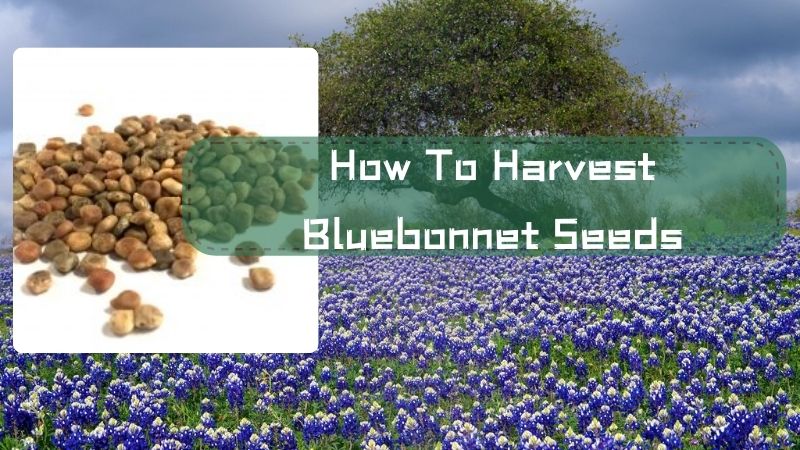The bluebonnet, with its captivating beauty and bright colors, is not only a symbol of the state of Texas but also one of the favorite wildflowers in many gardens. To maintain the growth of this flower and enjoy next year’s flower season, harvesting how to harvest bluebonnet seeds is very important. In this article, Garden Creatives will guide you step by step on how to harvest bluebonnet seeds, from harvest time to storage methods, allowing you to easily propagate this beautiful flower and preserve its beauty. garden.
What Are Bluebonnet Seeds?
Bluebonnet seeds are the seeds of the bluebonnet plant, a typical wildflower of the American Southwest, especially Texas. The bluebonnet plant belongs to the Fabaceae (legume) family and features clusters of blue or purple flowers, resembling a soldier’s hat. These seeds are small in size, round, or slightly flat in shape and are usually brown or black in color.
Bluebonnet Seed Characteristics
Bluebonnet seeds have a number of characteristic features that make them easy to identify and distinguish. Below are the outstanding characteristics of bluebonnet seeds:
Size and Shape
Size: Bluebonnet seeds are small, usually about 1-2 cm in diameter.
Shape: They are round or slightly flattened, with a smooth or lightly ridged surface.
Color
Color: Bluebonnet seeds are usually brown or black. Color may vary slightly depending on variety and growing conditions.
Cover
Shell: Bluebonnet seeds are surrounded by a hard shell, which protects the seed from environmental factors and helps maintain its life during storage.
Shell Characteristics: The shell of bluebonnet seeds can have a rough or smooth texture, and is usually dark brown to black in color.
Uses Of Bluebonnet Seeds
Although bluebonnet seeds are primarily known for their role in propagating bluebonnet plants, they also have a number of other notable uses:
Breeding Bluebonnet Plants
Planting: Bluebonnet seeds are used to plant new bluebonnet plants, helping to maintain and expand the presence of this flower in natural areas and gardens. They need to be sown in fall or early spring when the soil is warm and moist enough to stimulate germination.
Soil improvement
Increase Fertility: Bluebonnets are legumes, and like many other legumes, they have the ability to fix nitrogen from the air into the soil through symbiotic bacteria in the roots. Growing bluebonnets can help improve soil fertility, making it ideal for other crops.
Landscape Decoration
Enhanced Beauty: Bluebonnet flowers blooming from seeds can create a stunning landscape with vivid colors. They are often planted to beautify gardens, parks, and public spaces.
Cultural Application
Cultural Symbol: The Bluebonnet is the national flower of Texas and is often used in cultural events, festivals, and artistic representations. Bluebonnet seeds, when planted and blooming, contribute to the cultural heritage and beauty of the area.
Education and Research
Biological Learning: Bluebonnet seeds are also used in research and education about plant growth, germination, and adaptation to different environmental conditions.
How to harvest bluebonnet seeds
Bluebonnet, the state symbol of Texas, is a beautiful wildflower that many people love and cultivate. Harvesting bluebonnet seeds not only helps maintain the species but also makes it possible to replant them in subsequent seasons. Below are detailed instructions on how to effectively harvest bluebonnet seeds.
Understanding the Bluebonnet Life Cycle
Before you start harvesting, you need to understand the bluebonnet life cycle. This flower usually blooms in spring and produces seeds in late spring or early summer. Their seeds are located in pods, which will gradually ripen and separate to fall to the ground when conditions are right.
Time to Harvest Bluebonnet Seeds
The best time to harvest bluebonnet seeds is when the pods have turned brown and begun to dry. If harvested too early, the seeds will be unripe and have low germination. If harvested too late, the pods will split and the seeds will fall to the ground.
Prepare Tools
Before starting to harvest, prepare the following tools:
Scissors or sharp knife
Paper or fabric bags to store seeds
Gloves (if necessary to protect hands)
How to Harvest Bluebonnet Seeds
Step 1: Check the pods on the bluebonnet tree. Choose fruit that has turned brown and dried, but has not split open.
Step 2: Use scissors or a sharp knife to cut the beans from the plant. You can cut the whole cluster or individual beans depending on how many beans you want to harvest.
Step 3: Place the beans in a paper or cloth bag. Avoid using plastic bags because they can trap moisture, making the seeds susceptible to mold.
Drying and Seed Extraction
Drying: After harvesting, you need to dry the beans for a few more days. Place the bean bag in a cool, dry place and away from direct sunlight.
Getting the Seeds: When the beans are complete
Preserving Seeds
To preserve bluebonnet seeds long-term and maintain germination, you need to note:
Storing Seeds: Place seeds in a paper or cloth bag, then place the bag in a glass jar or airtight container.
Storage: Store seeds in a cool, dry place and away from direct sunlight. The ideal temperature is about 15-20°C.
Sow Bluebonnet Seeds
When it’s seeding season, you can sow bluebonnet seeds directly into the soil. Make sure the soil is moist and has good drainage. The seeds will germinate and grow into new plants, continuing the bluebonnet’s life cycle.
Conclude
How to harvest bluebonnet seeds not only helps maintain the beauty of your garden but also contributes to the conservation of this iconic flower. By understanding the bluebonnet life cycle and applying the right harvesting techniques, you can obtain many high-quality seeds to replant in subsequent seasons. Hopefully, this detailed guide will help you successfully how to harvest bluebonnet seeds.





